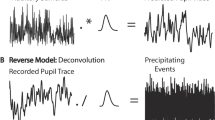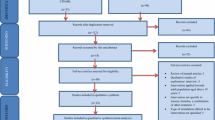Abstract
Recent research using measures to assess the time-dependent structure of postural fluctuations has provided new insights into the stability and adaptability of human postural control in adults. To date, little research has examined how postural dynamics reflecting the stability and adaptability of postural control may change as a function of development, especially during supra-postural tasks. The goal of this study was to examine the dynamics of postural fluctuations during a manual-fitting task in which precision, visual and postural task constraints were altered in children and adults. Three age groups were tested: 7-, 10-year olds and college aged adults. Recurrence quantification analysis (RQA) was used to assess the regularity (percent determinism) and complexity (entropy) of the center of pressure (CoP) in the anterior–posterior (AP) and medial-lateral (ML) directions. The CoP patterns exhibited by adults were more deterministic and more complex (higher entropy) than those of the 7-year-old children under the different experimental manipulations. No differences between the adults and the 10-year-old children were observed. The increase in determinism with a corresponding increase in entropy exhibited by the adults and older-children during a manual fitting task may be a prospective mechanism over which postural movements follow a more predictable path allowing for stable and flexible task performance. Our results also support the notion that complex postural fluctuations (as measured by RQA entropy) are functional and typically increase as the precision requirements of a manual task increase.





Similar content being viewed by others
References
Adolph KE (2002) Learning to keep balance. In: Kail R (ed) Advances in child development and behavior, vol 30. Elsevier, Amsterdam, pp 1–40
Bertenthal BI, Clifton RK (1997) Perception and action. In: Kuhn D, Siegler R (eds) Handbook of child psychology. Cognition, perception, and language, vol 2. Wiley, New York, pp 51–102
Bertenthal BI, Rose JL, Bai DL (1997) Perception-action coupling in the development of visual control of posture. J Exp Psychol Hum Percept Perform 23:1631–1643
Costa M, Priplata AA, Lipsitz LA, Wu Z, Huang NE, Goldberger AL, Peng CK (2007) Noise and poise: enhancement of postural complexity in the elderly with a stochastic-resonance-based therapy. Europhys Lett 77:68008
Davids K, Bennett S, Newell KM (2006) Movement system variability. Human Kinetics, Champaign
Forssberg H, Nashner LM (1982) Ontogenetic development of postural control in man: adaptation to altered support and visual conditions during stance. J Neurosci 2:545–552
Gibson JJ (1979) The ecological approach to visual perception. Houghton Mifflin, Boston
Hasson CJ, Van Emmerik RE, Caldwell GE, Haddad JM, Gagnon JL, Hamill J (2008) Influence of embedding parameters and noise in center of pressure recurrence quantification analysis. Gait Posture 27:416–422
Hopkins B, Ronnqvust L (2001) Facilitating postural control: Effects on the reaching behavior of 6-month-old infants. Dev Psychobiol 40:168–182
Kaminski TR, Simpkins S (2001) The effects of stance configuration and target distance on reaching. I. Movement preparation. Exp Brain Res 136:439–446
Mitra S, Fraizer EV (2004) Effects of explicit sway-minimization on postural-suprapostural dual-task performance. Hum Mov Sci 23:1–20
Pellecchia G, Shockley K (2005) Application of recurrence quantification analysis: Influence of cognitive activity on postural fluctuations. In: Riley MA, Van Orden G (eds) Tutorials in contemporary nonlinear methods for the behavioral sciences, pp 96–141. Retrieved from http://www.nsf.gov/sbe/bcs/pac/nmbs/nmbs.pdf
Pozzo T, Stapley PJ, Papaxanthis C (2002) Coordination between equilibrium and hand trajectories during whole body pointing movements. Exp Brain Res 144:343–350
Prado JM, Stoffregen TA, Duarte M (2007) Postural sway during dual tasks in young and elderly adults. Gerontology 53:274–281
Riccio GE (1993) Information in movement variability about the qualitative dynamics of posture and orientation. In: Newell KM, Corcos DM (eds) Variability and motor control. Human Kinematics, Champaign, pp 317–358
Riley MA, Balasubramaniam R, Turvey MT (1999) Recurrence quantification analysis of postural fluctuations. Gait Posture 9:65–78
Riley MA, Baker AA, Schmit JM (2003) Inverse relation between postural variability and difficulty of a concurrent short-term memory task. Brain Res Bull 62:191–195
Schmit JM, Regis DI, Riley MA (2005) Dynamic patterns of postural sway in ballet dancers and track athletes. Exp Brain Res 163:370–378
Schmit JM, Riley MA, Dalvi A, Sahay A, Shear PK, Shockley KD, Pun RY (2006) Deterministic center of pressure patterns characterize postural instability in Parkinson’s disease. Exp Brain Res 168:357–367
Shumway-Cook A, Woollacott MH (2001) Motor control: theory and practical applications. Lippincott Williams & Wilkins, Baltimore
Stapley PJ, Pozzo T, Cheron G, Grishin A (1999) Does the coordination between posture and movement during human whole-body reaching ensure center of mass stabilization? Exp Brain Res 129:134–146
Stoffregen TA, Smart LJ, Bardy BG, Pagulayan RJ (1999) Postural stabilization of looking. J Exp Psychol Hum Percept Perform 25:1641–1658
Stoffregen TA, Pagulayan RJ, Bardy BG, Hettinger LJ (2000) Modulating postural control to facilitate visual performance. Hum Mov Sci 19:203–220
Vaillancourt DE, Newell KM (2002) Changing complexity in human behavior and physiology through aging and disease. Neurobiol Aging 23:1–11
Van Emmerik REA, Van Wegen EE (2002) On the functional aspects of variability in postural control. Exerc Sport Sci Rev 30:177–183
Webber CL, Zbilut JP Jr (2005) Recurrence quantification analysis of nonlinear dynamical systems. In: Riley MA, Van Orden G (eds) Tutorials in contemporary nonlinear methods for the behavioral sciences, pp 26–94. Retrieved from http://www.nsf.gov/sbe/bcs/pac/nmbs/nmbs.jsp
Witherington DC, von Hofsten C, Rosander K, Robinette A, Woollacott M, Bertenthal B (2002) The development of anticipatory adjustments in infancy. Infancy 4:495–517
Acknowledgments
This research was supported by National Institutes of Health Predoctoral Fellowship 5F31NS050930-02 to Jeffrey M. Haddad. The authors thank Dr. C. L. Webber, Jr. for helping clarify the computation of RQA variables. The authors also thank Dr. Laura J. Claxton for helping with data collection.
Author information
Authors and Affiliations
Corresponding author
Rights and permissions
About this article
Cite this article
Haddad, J.M., Van Emmerik, R.E.A., Wheat, J.S. et al. Developmental changes in the dynamical structure of postural sway during a precision fitting task. Exp Brain Res 190, 431–441 (2008). https://doi.org/10.1007/s00221-008-1483-9
Received:
Accepted:
Published:
Issue Date:
DOI: https://doi.org/10.1007/s00221-008-1483-9




